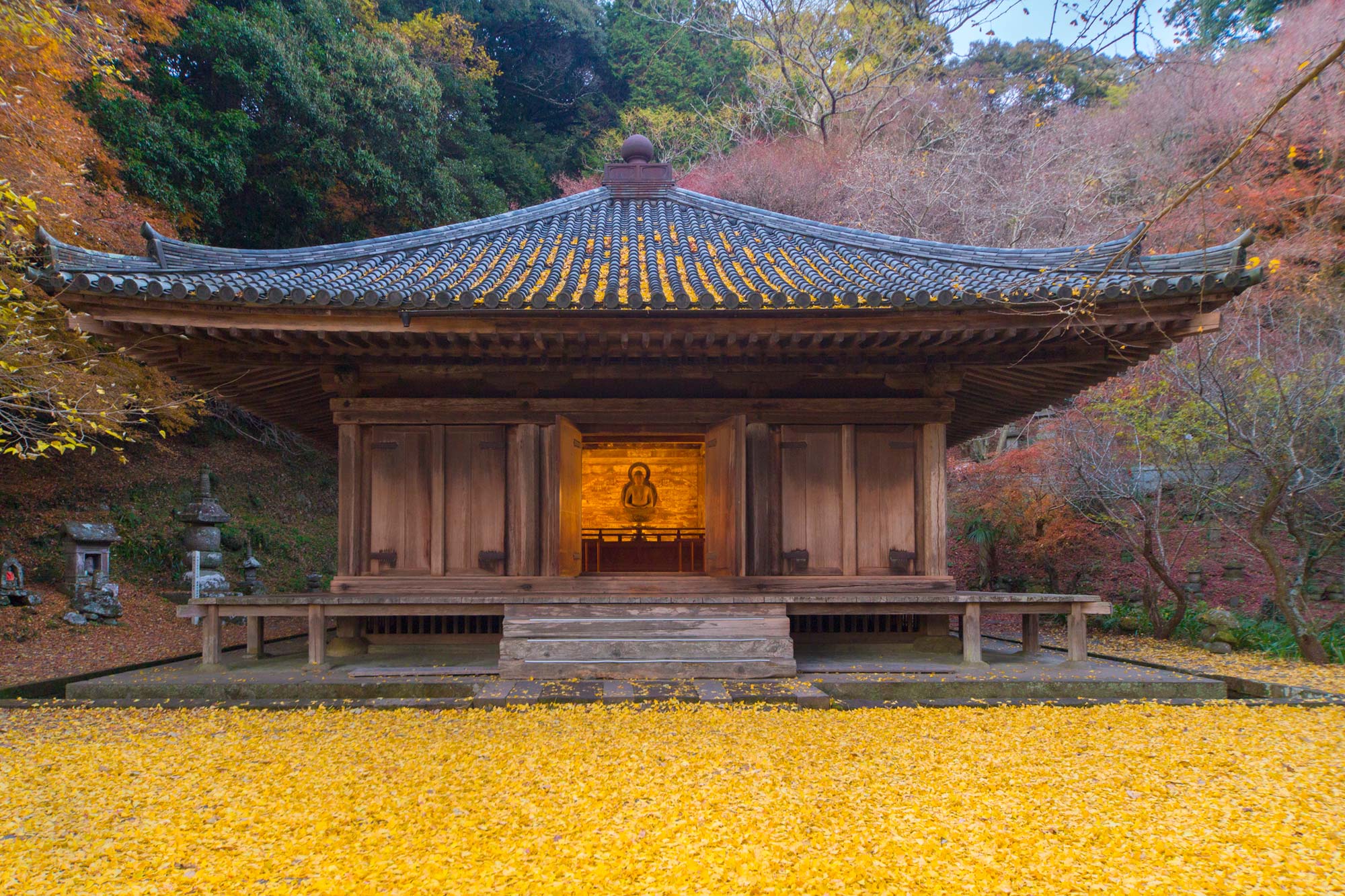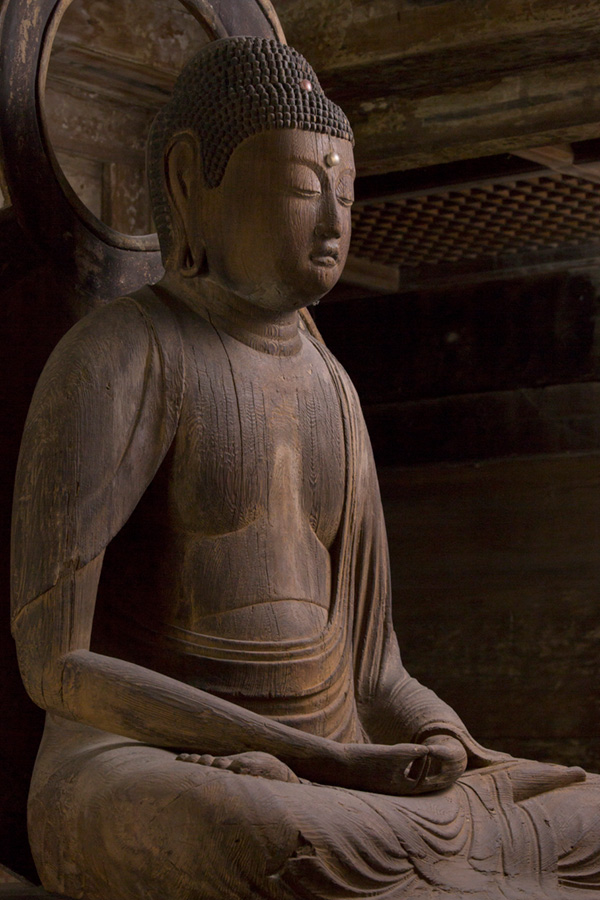

- Kunisaki Peninsula
- Shrines・Temples
Fuki-ji Temple
Photography/TAKEUCHI Yasunori
Deep Prayer for the Pure Land
Go up the stone steps through the gate to find a flat area with open skies. The bright skies are made even brighter by autumn leaves, behind which stands a temple hall. The tiled, tented roof glitters and curves gently, but perhaps because the eaves are so deep, the temple appears as a dark and silent guardian, five meters wide and seven meters deep.
Mount Renge’s Fuki-ji Temple, in Rokugou Manzan. The hall is a national treasure and the oldest wooden architecture in Kyushu, and is one of the top three Amida Buddha temple halls alongside Houou Hall at Byoudouin Temple in Uji and Konjiki Hall at Chusonji Temple in Hiraizumi. If you stand in the front garden and close your eyes, you can imagine the monks of the Amida triad circling the cloister and chanting. The area around the hall is lined with stone carvings that have been designated as cultural properties.
Entering the hall. There is a statue of the seated Amida Nyorai, the principal image of this hall, on the dais in the inner sanctum built on the four heavenly pillars (four round pillars). A Nationally Designated Important Cultural Property. Open the front door to the outer sanctum to find Nyorai enveloped in gentle light.
Behind it is a mural of the Pure Land. Though it has faded and chipped, a Pure Land Mandala can be seen clearly. On the pillars are Buddhas, bodhisattvas and arabesques. The beams of the outer sanctum also show Buddhas and bodhisattvas, Myouou, devas, and celestial beings.
There are replicas in the Prefectural Museum of History in Usa, showing that these were once extremely colorful. Amid these bright colors, visitors would imagine the Western Pure Land and diligently offered prayers.
Like other Manzan Temples, it is thought to have been founded by the monk Ninmon, and legend has it that it was built from a single nutmeg tree; however, the hall itself was built during the late Heian period. It was protected as a place of prayer for high priests of Usa Jingu Shrine. It went through some rough times, being dismantled at the end of the Meiji period for repairs, then damaged by bombs dropped nearby in the subsequent war. It was restored before being designated as a national treasure in 1952, then repaired again in the late 1960s. The name of the temple comes from its location, Fuki. Fuki was the name of the steep slope formation, but this slope was cut clear, matching marvelously with the surrounding forest.

On the dais in the main hall is a seated image of Amida Nyorai.

